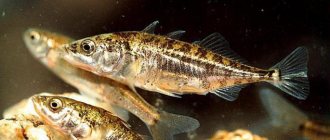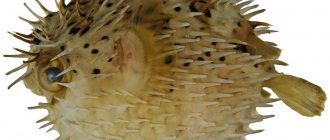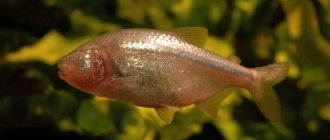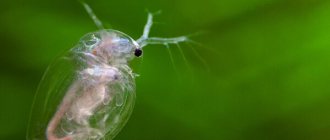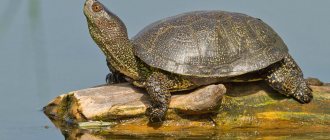- Wild animals
- >>
- Reptiles
Turtles are a fairly large order of reptiles, which includes more than three hundred species. All seas and continents are inhabited by turtles, with the exception of Antarctica, high latitudes and highlands. The land turtle belongs to the animals of the “chordate” type, class “reptiles”, order “turtles” (lat. Testudines). Turtles have existed on Earth for a very long time - more than 220 million years. The animal got its name from the word “testa” - “bricks”, “tiles”. Land turtles are represented by 16 genera, including 57 species.
Origin of the species and description
Photo: Land turtle
Scientists have established that turtles descended from one of the ancient extinct groups of reptiles, the code name of which is the Permian cotylosaurs. The extinct reptiles were very similar in appearance to lizards. They had short, but at the same time very powerful and wide ribs, which over millions of years of evolution turned into a shell. These were sea animals that had a rather long neck and a long tail. The ancestors of turtles were omnivores - they ate both plant and animal foods. Since their remains are now found on all continents, it is generally accepted that Permian cotylosaurs were very common at one time.
Video: Land turtle
The most characteristic feature of all turtles is the presence of a shell, which serves as protection from enemies. It consists of two parts: abdominal and dorsal. The strength of the shell is very high, since it is able to withstand a load that significantly exceeds the weight of the animal - more than 200 times. Depending on the species, land turtles vary significantly in size and weight. Among them there are both giants, weighing almost a ton with a shell size of about 2.5 meters, and very small, even tiny turtles, whose weight is no more than 150 g, and the length of the shell is 8-10 cm.
Zoologists distinguish two suborders of turtles, which differ in the way they hide their heads under their shells:
- side-necked turtles - hide their head in the direction of the left or right paw (sideways);
- Hidden-cervical - fold the neck in the shape of the letter S.
Types of land turtles:
- Galapagos tortoise. Its mass can reach up to half a ton, and its length can reach up to meters. The size and appearance of Galapagos tortoises depend on their habitat conditions. For example, in arid areas their shell is saddle-shaped; in areas where humidity is high, the shell has the shape of a dome;
- Egyptian tortoise. One of the smallest turtles. Lives in the Middle East. The shell size of males is about 12 cm, females are slightly larger;
- panther tortoise. Lives in northern Africa. The length of the shell is about 80 cm, weight is 40-50 kg. The carapace is quite high, dome-shaped;
- speckled cape. The smallest turtle on Earth. Lives in South Africa and Namibia. The length of its shell is no more than 9 cm, and its weight is approximately 96 - 164 g.
Characteristics of reptiles
Reptiles are quadrupeds, meaning they walk on four limbs, or are descendants of animals that had four limbs. They have a backbone, like all chordates. From an evolutionary point of view, reptiles are an intermediate link between warm-blooded mammals and cold-blooded amphibians.
Reptiles are amniotes. This means that females lay eggs, although some lizard species give birth to live young. The main difference between the offspring born of mammals and reptiles is the absence of a placenta in the latter.
All reptiles have scales, which are made up of several layers of dead skin. Crocodiles have tough outer skin like armor, while turtles have a shell. Fish and birds also have scales.
Reptiles are cold-blooded; their body temperature depends on environmental conditions. Cold-blooded animals bask in the sun to raise their body temperature and hide in the shade, under rocks, in bushes and burrows to cool down.
Appearance and features
Photo: Central Asian land turtle
As mentioned earlier, the turtle has a hard and durable shell. The animal has a hard protective shell over the entire surface of its back and belly. The shell itself consists of two parts: the carapace and the plastron. The carapace consists of an internal armor, the basis of which are bone plates, and an outer layer of horny scutes. Some species have a thick layer of skin over their armor. The plastron consists of fused abdominal ribs, sternum and clavicle.
The head of land turtles, in comparison with the body, is not very large in size and has a streamlined shape. This feature allows the animal to quickly remove it in case of danger. The neck of all types of land turtles is quite short, so the eyes are always directed downwards. Animals bite off and grind food using their beaks, which replace their teeth. The surface of the beak is usually rough with characteristic bulges that replace the animal’s teeth.
Interesting fact: Ancient turtles had real teeth, which were reduced over time.
The tongue of turtles is short and never protrudes, since its purpose is to help swallow food. Almost all species of turtles have a tail; it can be with or without a spike at the end. In times of danger, the turtle, like its head, hides it under its shell. Turtles molt periodically, although in land species the molting is not as pronounced as in their marine relatives.
Land turtles can periodically hibernate, which can last up to six months. This happens under unfavorable conditions: frost, drought. Land turtles are very clumsy and slow, for this reason, in case of danger, they do not run away, but hide in their shell. Another method of protection is sudden emptying of the bladder, which, by the way, is very spacious.
Where does the land turtle live?
Photo: Land turtle
The habitat of land turtles is concentrated mainly in steppe zones: from Kazakhstan and Uzbekistan to China, as well as in deserts, steppes, savannas, semi-deserts of Africa, America, Albania, Australia, Italy and Greece, Pakistan and India. Turtles are very common in temperate zones and all tropical areas.
You could even say that land turtles can be found almost everywhere:
- in Africa;
- in Central America;
- in South America, except Argentina and Chile;
- in Eurasia, except for the high latitudes of the continent and the Arabian Peninsula;
- in Australia, except New Zealand and the desert central part of the mainland.
The main habitat of land turtles is land, which is quite logical. Occasionally, animals can immerse themselves in water for a short time and do this in order to replenish the loss of moisture in the body.
Turtles themselves dig shelters for themselves, where they stay almost constantly, until hunger forces them to go hunting. For this reason, reptiles prefer to live on loose sandy and loamy soils, covered with dense vegetation, where there is sufficient water and food. Turtles prefer loose soil because it is much easier to dig.
Habitat
The lifestyle of a turtle is determined by its habitat.
Based on their habitat, turtles are classified into the following varieties:
- Marine reptiles that live in the seas and oceans.
- Terrestrial - reptiles that live on land.
Terrestrial turtles are divided into subspecies:
- Land animals are reptiles that live exclusively on land.
- Freshwater reptiles that can live in all kinds of bodies of water.
What does a land turtle eat?
Photo: Large land turtle
The basis of nutrition for land turtles is plants, that is, plant foods: grass, young branches of bushes and trees, juicy fruits, berries, fruits, vegetables. Sometimes, to maintain protein balance, they can feast on animal food: snails, slugs, worms and small insects.
Turtles obtain moisture for the body mainly from the succulent parts of plants, but if necessary, they can also drink water, doing this at any opportunity. Box turtles eat lichens and mushrooms, including poisonous ones. Because of this feature, their meat also becomes poisonous and is not suitable for food. But this is for the better, because the meat of most turtle species is considered a delicacy, which is why their numbers are constantly decreasing.
Central Asian turtles sit in their shelter all day, and only come out to eat after dark. This species is the most popular among turtle lovers as pets because they eat almost anything. During the winter, turtles do not eat anything because they hibernate. This behavior is due to the fact that with the onset of cold weather, food becomes very scarce. The duration of hibernation for land turtles depends on the climate. In the wild it lasts from October to March.
Now you know what to feed a land turtle at home. Let's see how she lives in the wild.
Features of character and lifestyle
Photo: Land turtle in nature
Even though the development of the brain in turtles is not at a high level, they have considerable intelligence. Land turtles are solitary reptiles. Their herd instinct is not developed at all. They look for a mate exclusively for the mating period, after which they safely leave the partner.
Also, all turtles are characterized by slowness, which is characteristic of most reptiles. In addition, turtles, like bears, under unfavorable conditions (during the winter months) can hibernate, for which small groups occasionally gather. During hibernation, all vital processes in their bodies slow down, which allows them to easily endure the winter cold. Turtles are also long-lived, even by human standards, as they can live many times longer than humans. On average, the life expectancy of land turtles in nature is 50-150 years.
Interesting fact: The oldest turtle in the world today is a tortoise named Jonathan. She lives on the island of St. Helena and probably remembers the times of Napoleon, when the former French monarch lived there in exile.
There are very few known cases of turtles causing harm to humans. Only snapping turtles became famous for this, and then only during the mating period, when the male can mistake a person for a rival and attack him.
Social structure and reproduction
Photo: Baby land turtle
As such, there is no mating season for turtles, so reproduction occurs at different times depending on the species and location. In land turtles, the onset of mating games is signaled by one event: for the right to fertilize a female, males enter into battle with each other. In doing so, they try to turn their opponent over or force him to retreat. There is only one method of action - powerful frequent strikes with the shell on the opponent's shell.
After the shameful flight of the competitor from the battlefield, the victorious male begins courtship. To attract the attention of the female, the winner can affectionately stroke her head with his paws and even sing. Some time after mating, the female lays eggs. To do this, they dig holes in the sand near bodies of water. Often, their own holes or even crocodile nests are used for these purposes. The egg clutch is thoroughly covered with sand or soil and compacted using a shell.
The number of eggs in a clutch may vary, depending on the type - 100-200 pieces. The eggs themselves can also be different: covered with a shell or a dense leathery shell. During the mating season, the female may lay several clutches. Under favorable conditions, after 91 days, small turtles hatch from the eggs, and their sex completely depends on the temperature at which the incubation period took place. If it was cool, then males would hatch, if it was hot, then females. For reasons unknown to science, sometimes the incubation period can stretch from six months to several years.
Interesting fact: In 2013, an amazing event occurred in the museum of the city of Dnepr (formerly Dnepropetrovsk). Turtle eggs, which had been lying on exhibit stands for several years, unexpectedly hatched into baby turtles.
How do European marsh turtles reproduce?
Males have a longer and thicker tail than females, and a slightly concave plastron. Females lay eggs in depressions in the coastal zone, not far from the reservoir. They bury the clutch with ellipsoidal eggs. Reptiles living in an aquaterrarium often give birth to offspring. They reach sexual maturity at 6-8 years of age.
A few days before laying eggs, the expectant mother becomes nervous, anxious, finds it difficult to sit still, and tries to leave the aquarium. You can also catch a turtle digging a hole on an island of land. The babies that have just been born are black in color with a faint yellow pattern. The first food of juveniles is the composition contained in the yolk sac, which is located on the abdomen.
As is the case with other turtles, the sex of representatives of this breed depends on the temperature regime. If during the incubation period the indicator remains at 28°-30°C and above, the newborn turtles turn out to be females. At low temperatures, males appear. With intermediate values, you can get heterosexual offspring.
Natural enemies of land turtles
Photo: Land turtle
Despite reliable protection in the form of a hard shell, turtles have many enemies in nature. Birds of prey (hawks, eagles) hunt them and drop them from a height onto rocks, pecking out their entrails. Crows, magpies, and jackdaws can completely eat barely hatched babies. There have been cases when foxes threw turtles from cliffs onto stones in order to then split their shells and eat them.
In South America, land turtles are hunted very successfully by jaguars. They eat reptiles out of their shells so skillfully that the results of their work can be compared to the activity of a surgeon’s scalpel. At the same time, predators are not content with one turtle, but eat several at once, turning them over on their backs with their paws on flat ground, without grass and stones. Sometimes large rodents, rats, prey on turtles, biting off their tail or limbs. At the same time, the most important enemies of turtles are people who hunt them for eggs, meat, and just for fun.
In addition to predators and humans, the enemies of turtles can be fungi, viruses, and parasites. Often, sick and weak turtles, due to their slowness, become food for ants, which can very quickly gnaw off the soft parts of the body. Some turtles can even engage in cannibalism, eating their relatives if they are unable to escape or resist. As for the giant Galapagos tortoises, given their size and weight, they have no natural enemies.
Interesting fact: Aeschylus, the ancient Greek playwright, died a very ridiculous death. A turtle, picked up by an eagle, fell on his head.
Interesting Facts
- In some Eastern mythologies, such as Chinese, the turtle represents one of the four main characters. Along with the dragon, qilin (a mythical creature with several horns, the body of a horse, a dragon's head and a bear's tail) and the phoenix, it often appears in legends as a wise and benevolent animal.
- In ancient times, it was generally accepted that the turtle was the basis of the universe. The model of the world was depicted in the form of this animal. Three elephants stood on her back, and they, in turn, held the Earth on their backs, which seemed almost flat.
- Sea turtles are such outstanding swimmers that local populations choose them as mascots or specimens. For example, the famous swimmers from the island of Fiji bow their heads with respect before the outstanding swimming qualities of these animals, and it was on this island that the marine department chose them as their symbol.
- Turtles, spending their entire lives in the sea, always strive to return to their birthplaces to continue their offspring and unerringly find them. They build navigation based on the magnetic field of our planet, which helps them not to wander in the open sea.
- In philosophy, there are paradoxical reasonings - aporias, the author of which is the ancient Greek philosopher Zinon. One of them says that the fleet-footed demigod Achilles will never catch up with the tortoise. Its essence is that space and time are infinitely divisible; there is always a part of the path left that the turtle managed to overcome, but Achilles did not. This is a false idea, and it constitutes this paradox. We touched upon this issue only so that the reader can understand where the reference to the aphorism “Achilles and the Tortoise” is found in some famous literary works.
Population and species status
Photo: Land turtle in nature
Only 228 species of turtles have protected status from the International Union for Conservation of Nature, and 135 of them are on the verge of extinction. The most famous rare endangered species of land turtles is the Central Asian land turtle.
The main reasons that threaten the growth of the population of land turtles:
- poaching;
- agricultural activities;
- construction activities.
In addition, land turtles are very popular pets, which also does not work in their favor. After all, for this purpose, turtles are constantly caught and kept in captivity until sold, and not always in good conditions.
Turtle meat is a valuable delicacy, which is why it is popular among restaurateurs. The unpretentiousness of turtles greatly facilitates their transportation, which is why they are transported as “live canned food.” Animal shells are often used in the manufacture of various souvenirs and traditional women's hair jewelry.
Fun fact: In most states in the United States, keeping turtles as pets is legal, but not recommended. However, it is completely prohibited in Oregon. In addition, US federal law prohibits turtle racing, as well as the trade and transportation of turtles smaller than 10 cm.

